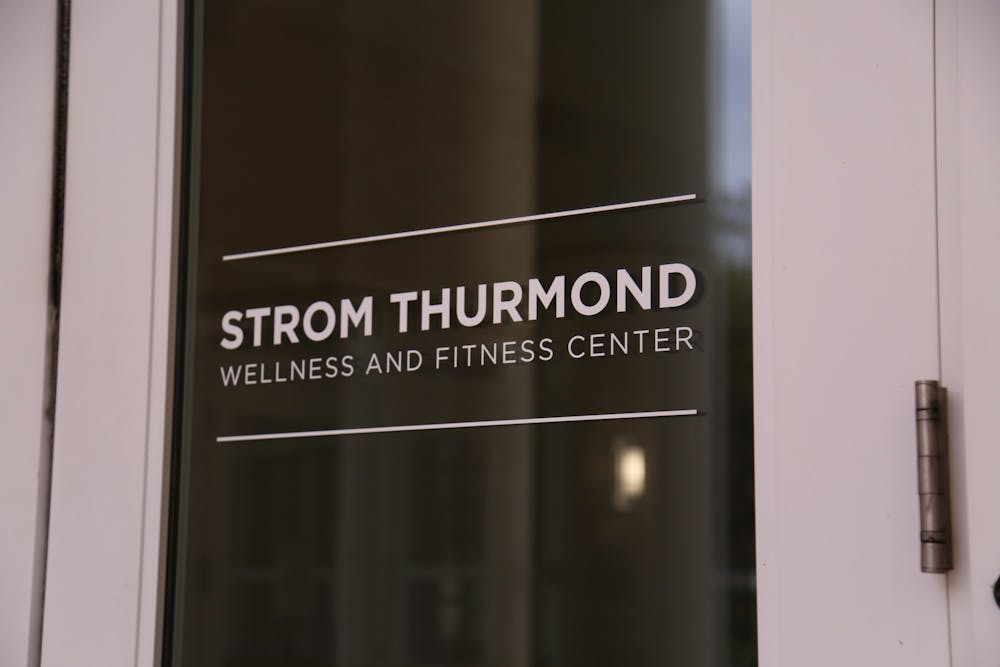When the University of South Carolina renames buildings, we erase the history of its campus and raise questions pertaining to the names of other buildings, statues, street names and cities across Columbia and the United States.
This discussion has remained prominent in the news for many years, especially receiving attention following the murder of George Floyd, a black man, at the hands of police officers this past May. Since June, many students and faculty members have called in particular for the names of Strom Thurmond Wellness and Fitness Center and Sims at Women's Quad, named after former Senator Strom Thurmond and Dr. James Marion Sims, to change.
Thurmond ran for president in 1948 as the Dixiecrat candidate who supported states' rights to racial segregation. He currently holds the record for the longest individual speech in the Senate, when he prompted a filibuster against the Civil Rights Act of 1957. He speech lasted for over twenty four hours. Sims, known as the “father of modern gynecology,” experimented surgeries and techniques on enslaved African American women and children. In fact, a statue of Sims was removed from Central Park in 2018 after its presence spurred protests.
While most can agree that these historical individuals’ lives are surrounded in controversy due to participation in questionable and horrendous actions against African Americans, many have come to disagree in how to approach acknowledging their legacies through the buildings’ names.
Changing the names of these buildings will not solve nor take away from what happened in the last few centuries. The only thing that would be taken away is a key part of this country’s vast history, which includes both good and bad elements that have built the United States up to what it is today. Renaming these buildings, buildings that were named in times when the U.S. held very different morals and ethics than it does today, exhibits a presentist attitude, turning a blind eye to anything that ever went wrong and not acknowledging any growth from prior mistakes.
Similar to Thurmond and Sims, many other buildings and monuments have been protested for being named after what some recognize to be controversial figures in the United States’ history. This includes George Washington and Christopher Columbus, as Washington was in possession of African American slaves and Columbus’ exploration of America paved the way for Europeans to enslave and convert Native Americans to Western philosophies.
Arguing that the names of buildings such as the Strom Thurmond Fitness and Wellness Center and Sims at Women’s Quad warrants the names of anything and everything deemed offensive to be changed as well. This could easily translate to any monument, dollar bill, city and street, or even the nation’s capital city being changed as they reflect our first president. This applies for anything named after Columbus as well, including the University of South Carolina’s home in Columbia, as this was also named after the explorer.
The definition of presentism is "the interpretation of past events in the light of present-day attitudes, rather than in the light of their own historical context," according to Your Dictionary. Simply renaming a building does not wipe away the history associated with its former affiliation; it only gives reason for the public to rewrite a history that should be known and learned upon.
An example of how to approach the uglier sides of history in an appropriate manner can be seen through the plaques commemorating the former slaves quarter outside of the president's home and the Horseshoe wall built by enslaved African Americans dating back to before the Civil War.
Instead of trying to change the names of these sites or outright ignore their significance, the plaques serve to educate the public on this university’s past mistakes and how it has grown since. In a culture and time period that jumps to cancel anything deemed uncomfortable or ugly, these buildings should instead have some kind of visible, aware acknowledgement of its names’ and architectures’ histories and how we can learn from these past mistakes at the University of South Carolina rather than renaming them altogether.

